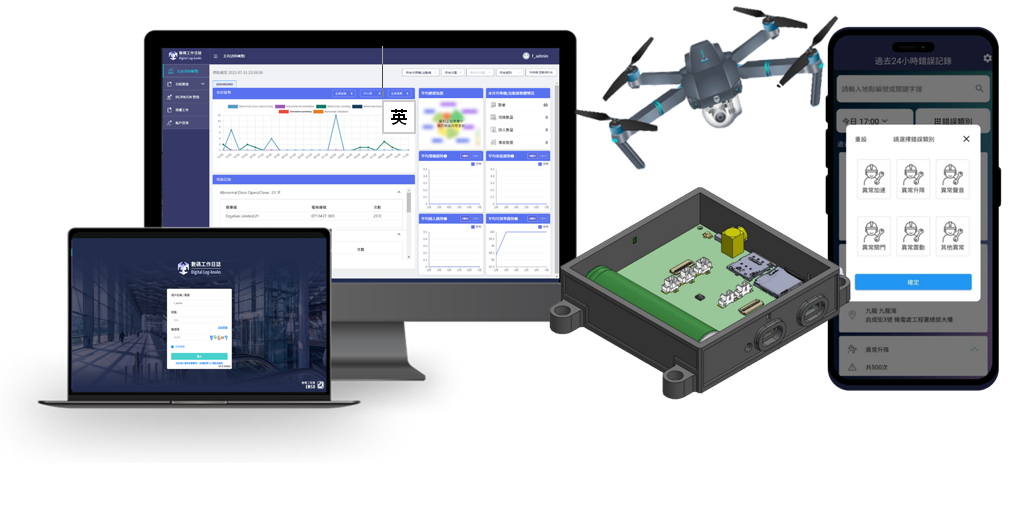| Expected Outcome |
- IoT Platform
- Formulate a guideline on the development of IoT sensors for lifts regarding international standards.
- Collect data from different registered sensors made by different suppliers.
- Apply machine learning and AI to analyze the collected operation and fault data. Build a comprehensive model to deliver predictive fault alerts accurately, reducing the chance of incidents.
- Integrate with Digital Log-books for Lifts and Escalators. Enable lift owners and contractors to better monitor their lifts for uplifting lift service quality and safety level.
- IoT Sensors
- Upgrade the sensor functionality, stability, and accuracy while being low-cost and non-intrusive.
- Add a sensor in the lift machine room to measure brake sound, vibrational signal, and other related signals for detection of lift motor brake malfunction.
- Detect multiple types of faults to facilitate workers to take effective remedial actions and to enable predictive maintenance.
- Drone Technology
- Apply the drone for lift shaft inspection, including rope, rail, ceiling, wall, lift pit, and components that are difficult/dangerous to access. Through these enhancements, the cost-effective sensor can help monitor the status of equipment and deliver predictive fault alerts accurately. The IoT platform can integrate different registered sensors and show the sensor data in the dashboard for users to easily and conveniently monitor the condition of their facilities. In addition, the application of drone technology during lift shaft inspection could eliminate the hazards associated with lift shaft inspection, to enhance occupational work safety and efficiency.
|
